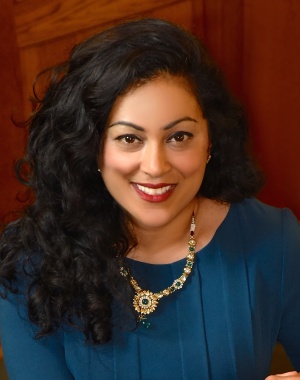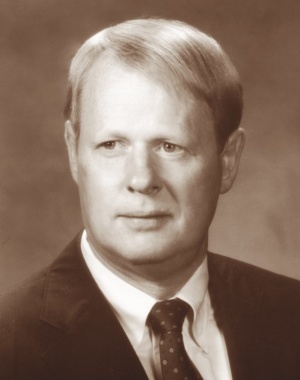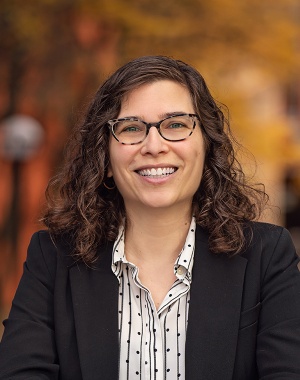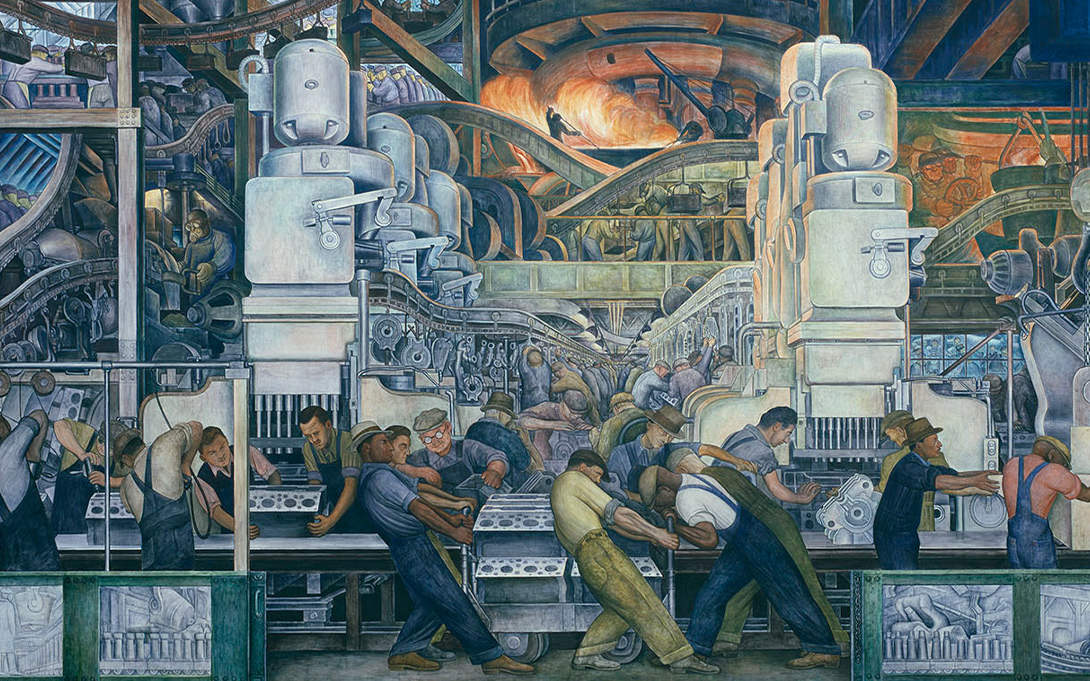
Parthasarathy and the Science, Technology, and Public Policy program chart a unique course for impact
In 2005, when Shobita Parthasarathy saw a position advertised to create a new policy program in science and technology at U-M’s Gerald R. Ford School of Public Policy, she jumped at the chance to apply. She had been interested in the field going back to her undergraduate days as a biology major at the University of Chicago where, with the Human Genome Project underway, she wondered what regulations might be required to help people grapple with new genomic knowledge. But, as she says, “Science and technology policy wasn’t really a thing people studied back then.”
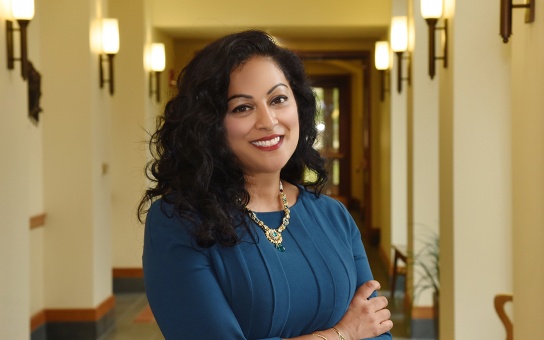
So instead, following graduation she went to work for the National Academy of Sciences and for the White House Advisory Committee on Human Radiation Experiments, a task force that was working both on uncovering the human radiation experiments that had been conducted during the Cold War and analyzing what current human-subjects research should look like. During that period, she says, she “observed the politics of science for the first time.”
But it was at graduate school at Cornell that everything changed. “I thought I would go into policy as a practitioner, but it turned out, I loved to do research,” she says, remembering her decision to pivot to academia. “I felt there just wasn’t enough knowledge that had been produced on the issues that I thought were really important. But I wondered, ‘How can I make sure that I use this research to change the world?’”
Enter James Duderstadt, the former president of the University of Michigan from 1988 to 1996 and a recognized leader in science and technology. Wanting to enhance the University’s visibility in this area and train scientists and engineers to be more effective in the policy space, he convened a task force in 2005 with the provost’s help. The task force recommended the University hire both a senior and junior faculty member to start the Science, Technology, and Public Policy (STPP) program at the Ford School, and the provost provided funding for the positions. Ironically, they never did hire the senior faculty member, only Parthasarathy, who directed STPP from 2006–2011 and now again since 2016. “I was so naïve,” she says. “I didn’t realize that first-year assistant professors aren’t supposed to create and direct research centers. I had no idea that that wasn’t a thing.” The biggest challenge for Parthasarathy was that no other school of public policy at the time had a broad-based science and technology program. “It didn’t exist,” she says.
With initial funding obtained from the Dow Foundation by Duderstadt, Parthasarathy, aided by postdoctoral fellows, set up a lecture series, as well as the STPP graduate certificate program, which exists to this day.
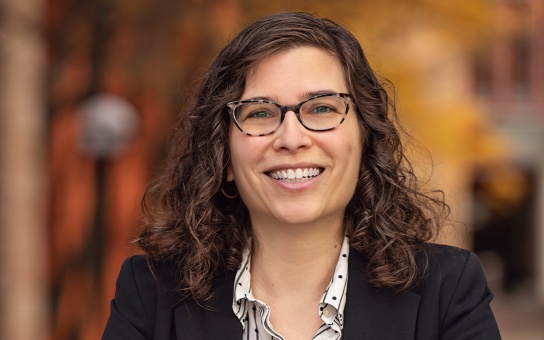
Today, roughly 80 students from schools across campus are enrolled in the certificate program in addition to earning their primary degree, whether it be a PhD in the sciences, medicine, or engineering, or a master’s in public policy. More than 50 faculty affiliates play different roles in the program, according to STPP’s managing director Molly Kleinman, herself an STPP certificate alumna. (Kleinman completed the program in 2014 while earning her PhD at U-M in higher education and has worked for STPP since 2018.)
“Our students might be nuclear engineers who want to help produce energy without greenhouse gas emissions, or neuroscientists who want to learn how we can better support people with Parkinson’s disease. They do work that is relevant to policy,” explains Kleinman, who beyond working at STPP also serves as chair of the Ann Arbor Transportation Commission, where she gives policy advice and recommendations to the city council on how to create a multi-model transportation system that is safe for everyone from bikers to pedestrians.
Beyond its educational programs, STPP is a research center that has become increasingly visible in the last five years. (In 2021, the program received a $400,000 grant from the Ford Foundation and another $165,000 grant from the Sloan Foundation for research into the implications of large language models, a type of artificial intelligence.) Faculty, students, and staff regularly engage in a variety of projects linked to the most talked about issues, from the regulation of autonomous vehicles to how we can improve access to life-saving pharmaceuticals and medical devices. “You can’t go a day without looking at the front page of the major newspapers and finding a story that is related to science and technology,” says Parthasarathy, whose career and reputation have helped make the program one of the top in the country. “We were out early and ahead of the curve doing this work. It took a while to convince people what we were doing was so crucial,” she says. “Now, because of our reputation, people turn to us to find out what is going on in the world.”
How can we think more creatively to make sure that artificial intelligence achieves its potential but is not used to systematically harm people who are marginalized.
Parthasarathy
Parthasarathy’s earlier research revolved around genetics and biotechnology. Later, she became interested in intellectual property and patents. Now, Parthasarathy is looking into how we can ensure that research funding and intellectual property policies promote equity and justice. (She has testified on these issues twice before Congress.)
To that end, she is digging deep into how designers, scientists, and engineers can do a better job developing and implementing emerging technologies so they are more democratically legitimate and inclusive. “How can we think more creatively to make sure that artificial intelligence achieves its potential but is not used to systematically harm people who are marginalized,” says Parthasarathy, mentioning how algorithms are now being used for automated hiring, bail decisions, and bank loans. “We have people making assumptions about the objectivity and efficiency of artificial intelligence and asking, ‘How can it be problematic?’” she says. “But it turns out if you scratch the surface, it is not really that intelligent.”
Frequently, the companies that build these tools will say, ‘Oh, it’s a machine and we have removed human bias from the process.’ Except humans with biases built the machine.
Kleinman
Or as Kleinman puts it, “Frequently, the companies that build these tools will say, ‘Oh, it’s a machine and we have removed human bias from the process.’ Except humans with biases built the machine.” Parthasarathy has also been researching vaccine equity, another hot topic given the pandemic. “How can we make sure that there is a more equitable distribution of life-saving technologies?” she asks, adding, “and how do we ensure that we are increasing citizens’ trust in governmental institutions.”
But as Kleinman mentions, STPP is also working on local issues. “Whether it is flooding in Detroit due to climate change or how hiring algorithms are affecting people with disabilities, we are working together to build partnerships,” she says. “Our partners bring their expertise to the policymaking sphere and we bring our expertise to help them be more effective advocates.”
But it is what STPP graduates do once they leave U-M that makes Parthasarathy so proud of the program’s success. “We have these graduates out there who are doing extraordinary things, whether in policy or in industry. Many have also gone on to professorial careers. They think, and teach, and lead very differently because of their participation in our program.”
One of those graduates is Max Bronstein (MPP/STPP ’10), now the assistant director of health innovation at the White House Office of Science and Technology Policy (OSTP). Bronstein, who works on the health and life science team, looks at big issues like pandemic preparedness and launching the Cancer Moonshot, a presidential initiative to marshall resources across the federal government and speed up progress in cancer research.
“STPP is a unique program. One of the things I appreciated most was taking classes outside of the Ford School at the business and environmental science schools. It created that multidisciplinary lens that has been very helpful to me in my career, especially at the White House,” says Bronstein. “One day I come and think I am working on something, and then it turns out to be wildly different. Being able to be comfortable moving between disciplines and knowing how to ask the right questions to get to policy solutions is a skill set that has proved very valuable to me and I honed that at Michigan,” he says.
When asked about the future of STPP and where she finds her inspiration, Parthasarathy answers, “It turns out, the 20-year-old in me definitely wouldn’t have realized I am a science and technology policy nerd through and through. But I am the person who hears something on NPR, and is like, ‘What is that technology? Maybe we should look into that?’ Just like anybody else, I guess.”
By Jennifer Conlin
More in State & Hill
Below, find the full, formatted spring 2022 edition of State & Hill. Click here to return to the Spring 2022 S&H homepage.

